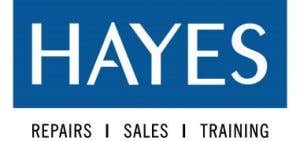New CDC Guidelines: What You Need to Know (Part 1)
The Oral Health Division of the CDC recently released new recommendations. The recommendations are extensive but here we highlight a few key areas that your practice should be aware of.
Sterilization and Disinfection of Patient-Care Items and Devices
The CDC recommends that cleaning, disinfection, and sterilization of dental equipment be handled by a dental professional who has been thoroughly trained in a multistep process. The latest guidelines specify that handpieces and attachments, including low-speed motors and reusable prophy angles, should be heat sterilized between patients and not just cleaned and disinfected. Studies have revealed that these items can be contaminated with patient materials during use. If these devices are not properly cleaned and heat sterilized, the next patient may be exposed to potentially infectious materials. In order to follow these guidelines, your practice must have enough low-speed motors, attachments and prophy angles to allow for sterilizations between patients. This translates to at least 3 of everything: one for use in the operatory, one in the sterilizer (for the next patient) and a backup. In many cases, the cleaning and sterilization process is longer than the patient visit, meaning there is a handpiece being used on a patient, one in the sterilizer, and one being processed but not fully sterilized. It’s impossible to follow the guidelines without the necessary equipment allotted to each operatory and it also depends on patient load.
Clean Before Sterilizing
The CDC is also recommending that handpieces, instruments, and attachments—anything that is going to be sterilized—be cleaned before going into the sterilizer. If blood, saliva, and other contamination are not removed, these materials can shield microorganisms and potentially compromise the disinfection or sterilization process. The CDC recommends the use of automated cleaning equipment to improve cleaning effectiveness and decrease exposure to blood. After cleaning, dried instruments should be inspected, wrapped, packaged, or placed into container systems before heat sterilization.
Packages should be labeled to show the sterilizer used, the cycle or load number, the date of sterilization, and, if applicable, the expiration date in case of a sterilization failure.
For more information about the latest CDC guidelines or for in-office staff training on maintenance procedures (for CE credits), please contact your local Hayes office.




